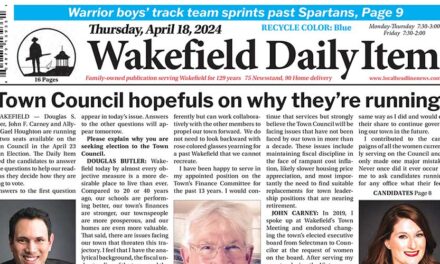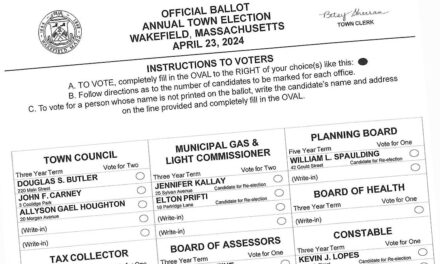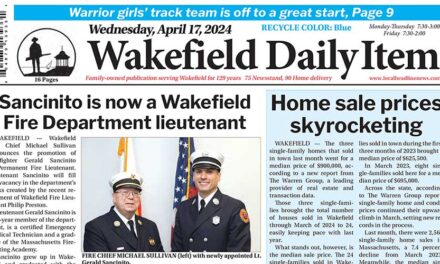Published November 24, 2020
By MARK SARDELLA
WAKEFIELD — In an effort to correct some misinformation and rumor as to the reason that the Broadway commuter rail crossing remains closed, Town Engineer William Renault provided some detail at last night’s Town Council meeting as to the reasons for the delay.
Those reasons are directly tied to the town’s status as a “quiet zone,” meaning that trains will not routinely sound their horns when approaching a crossing.
A quiet zone is a kind of tradeoff where sufficient safety measures must be in place so that it is not necessary for trains to sound their horns as a warning when approaching road crossings.
Renault was at last night’s Town Council meeting to discuss another matter but was asked to shed some light on the status of the Broadway crossing.
One of the safety requirements for a quiet zone designation is a raised median of a certain length in the roadway approaching the crossing. Raised medians prevent motorists from driving around closed gates at crossings.
Renault explained that when National Grid was doing its work at the crossing for its underground transmission line, the town and the Light Department decided to take the opportunity to install casings for the town’s own transmission mains that would facilitate easier maintenance in the future.
As part of the Broadway project, the raised medians were removed. Renault said that after the project was finished, he contacted the Federal Railroad Administration to discuss restoring the raised medians. At that time, he was informed the FRA had changed the way that they handle quiet zone reviews and the town’s approach to quiet zone status has some inconsistencies with the federal rules.
Renault said that safety measures mandated by the FRA for quiet zones must be installed exactly according to FRA requirements and those requirements pertain to every crossing in the town. He said that he met with the FRA last week to discuss how the town will meet the requirements to maintain its quiet zone status.
He said that he hoped to have a proposal by early next week as to how the town could get the Broadway crossing open. But he cautioned that the town could be looking at more extensive – and expensive – long-term fixes like adding a four-quadrant gate system to block all lanes of traffic at every crossing at a cost of up to a $1 million per crossing.
Renault explained that Wakefield was an early adopter of quiet zone status and because of that, the town’s threshold requirements to retain that status are much lower than for other communities. However, the FRA has warned that if the town opens that intersection without FRA approval it will lose its quiet zone status. The town would then have to reapply and could be required to meet much higher standards to regain its quiet zone status, including installing the four-quadrant gate systems at every crossing at a cost of up to $1 million for each crossing.
“It’s very critical that we don’t open (Broadway) so that we keep our quiet zone in place,” Renault said. He said that the FRA has told the town that it cannot open the crossing until it is determined where the town stands in terms of its quiet zone status.
“It’s very complicated,” Renault said, adding that the town is “looking at every conceivable option” to get the Broadway crossing open as soon as possible.
Town Councilor Paul DiNocco noted that the FRA has very strict guidelines and they tend to be “unforgiving” in enforcing them.
Councilor Julie Smith-Galvin wondered if there was a presumption that Wakefield wants to remain a quiet zone, even if it means keeping Broadway closed for a lengthy period.
Renault said that he hoped that discussion could be pushed off into the future. He said that he hoped to get the Broadway crossing open first and then have the discussion of the merits of a quiet zone down the road, if the town is required to install the costly four-quadrant gate systems.




